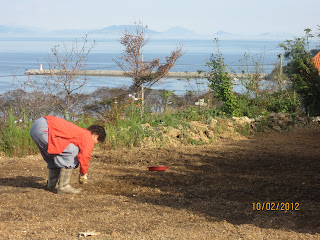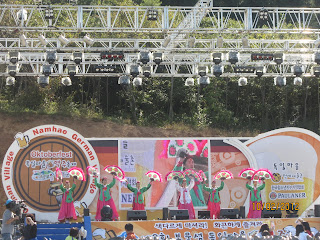Living in Korea has helped me to seriously reconsider our spending habits as a family. Every year in the US, we had to scramble to make ends meet on our family budget. Actually, "budget" is too strong a word. In reality, it was not unusual for more money to go out than came in during the month. Our kids were in a private Christian school. We had two cars. I liked to eat my favorite foods in healthy portions. We justified eating out for fast food because of our busy schedule. I felt entitled to purchase an occasional antiquarian book, justifying it as a reward for hard work. You pretty much get the picture without having to detail other indulgences that routinely ran up the family expenses. Unfortunately, we reflected an attitude towards spending that is all too common in the states. (My apologies to the many we know who are the exception to the rule.)
Korea has given me a different perspective on spending. I recognized this change this morning at the faculty chapel service. We had the former president of a prestigious university in Seoul speak to the faculty. He spoke about the things that really matter in life. One of his illustrations described his pleasure in driving a small and inexpensive car. This made him happy because it freed up funds he could use to travel to encourage (and support) missionaries in Africa and other far off places. Many may have the impression that Korea reflects the American lifestyle of extravagant living. Although there are segments of Korean society that create this impression (like the Gangnam district of Seoul parodied in the Gangnam Style video), it is not the culture in this country. Instead, most people, including the wealthy, tend to be quite frugal and see that way of living as a virtue.
Susan is quite committed to adopting this same frugal life style for our family. She is starting to make a believer out of me. We are now home schooling our kids. This alone saves us close to $2,000 a month on school and school related expenses. Food is expensive in Korea. If we were to eat the same foods we liked in the U.S., our food bill would go up considerably. Instead, we shop much more carefully. Our meal portions are smaller and contain less meat and more vegetables than ever before. We do not eat out very often, and when we do, we tend to visit the restaurants on campus where a meal costs about 3-5 dollars per person. We are spending less on food than we've ever spent before. We do not have a car. Between the cost of the car, gas and insurance, this is quite an additional saving. The downside is that the lack of a car is also quite an inconvenience. Trips to town usually take about 3-4 hours for most errands as we take the free shuttle from the university and then walk or take a cab (about $2.00) to reach our destination. Shopping trips are a challenge for a family our size. We are loaded down with bags on our return trip. We will likely eventually purchase a car, but it is worthy to note the financial benefits to our current budget. I must admit, it feels pretty good. It's even had a positive impact on my health due to the improved diet and need to walk almost everywhere we go. I think I've probably lost some weight, though we're now too frugal to purchase a scale to find out!
We currently are able to set aside savings every month. Because of these savings we hope to be able to take our family to Cambodia and perhaps Thailand and Laos over the Christmas holidays without our usual practice of pulling out a credit card. This would be a wonderful opportunity for our family to see and experience foreign missions. I'm hoping this change in our spending habits is something that will last as we become more Korean in our outlook on money. Wouldn't this be a good souvenir to bring back with us to the States?
Ken Chinn






















































